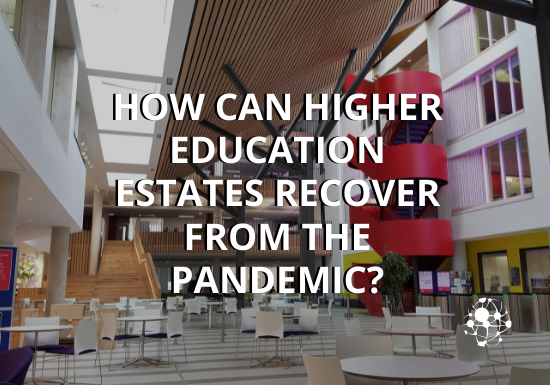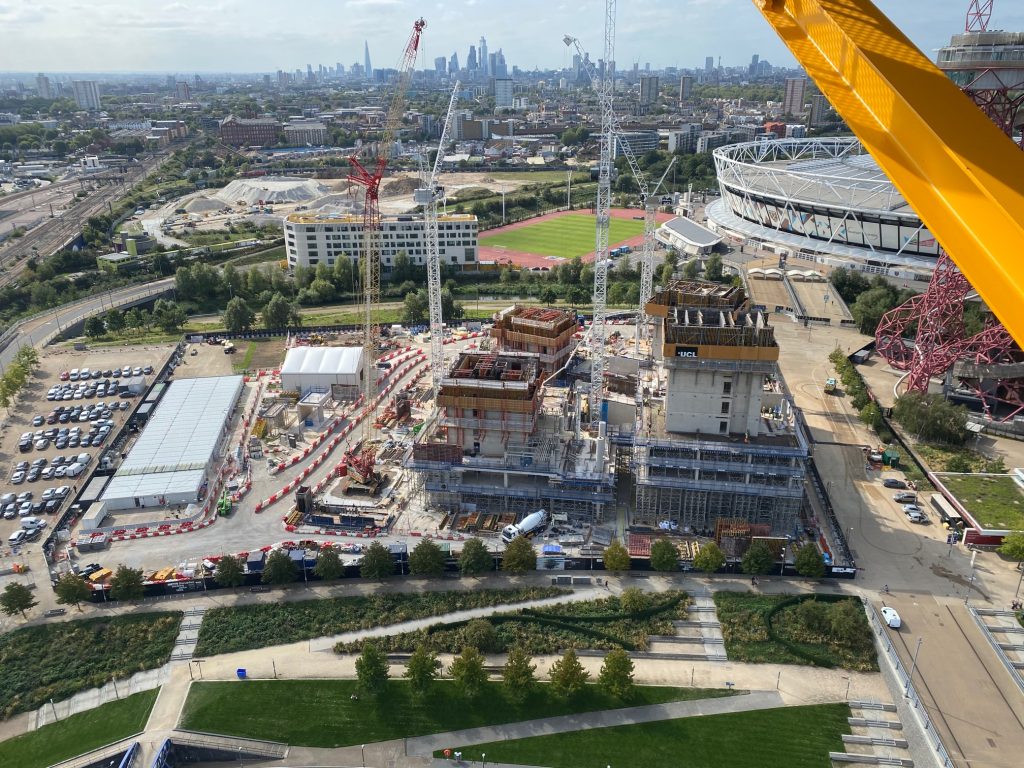
Simon Ebbatson, Elementa’s lead for higher education, explores the challenges ahead for higher education estates, discussing the need for expenditure to be targeted thoughtfully.
Following AUDE’s annual 2021 online conference, it is clear that the university sector faces the severe fallout of both Brexit and the COVID-19 pandemic. With such drastic changes, the higher education landscape has been reshaped over the past 12 months, seeing an acceleration in the challenges that the sector must address.
Statistics presented by London Economics at AUDE 2021 indicate an average drop in income of £20m per higher education institution, resulting in up to half of higher education institutions (HEIs) hitting a deficit after sources of income dried up alongside the pandemic. To combat this, Russell Group universities are accommodating larger year groups to prop up finances after the drop in foreign student numbers and their associated income. This approach also brings its own set of challenges as the occupant capacity of built assets must be adapted to accommodate social distancing.
Last summer, several of Elementa’s engineers assisted one Russell Group university by evaluating their naturally ventilated teaching spaces in preparation for the new socially distanced occupation densities of students, designing additional ventilation measures with minimum intervention where necessary. Carefully planning and preparing to protect students and staff in this manner must be commended and it is a shame that these efforts have yet to result in the continuous occupation of such spaces.
As we look to the 17th May, there is hope that students will return to their studies, adapting to a new way of life. As this date rapidly approaches, as both individuals and institutions, we must question how the new normal will change the way in which we occupy teaching and community spaces.

From a macroeconomic perspective, the answer is clear – an end to the era of landmark placemaking and showpiece buildings as HEIs cut spending unless absolutely essential. It is questionable whether this is wise, given the increasingly globalised market for students and research and with foreign universities from the USA to Australia (faced with fewer challenges) looking outwardly to expand. It is possible that the UKs international standing could face significant damage, yet in the present climate it seems to be an inevitable risk, given the scale of the challenges faced.
However, we cannot lose hope and must examine the good that may come as a result of a post pandemic era. Most universities have always had large amounts of floor space which are not well utilised. The perennial debate of the need for academic office space – where academics demanded individual offices in order to be able to apply intense focus on their subjects and were held onto dearly as status symbols, yet were rarely occupied – will certainly be under renewed pressure. This comes alongside the continuation of blended working, where for many, the home has become an ideal space for focus of this kind.
There are of course, obvious challenges in terms of collaboration. Those serendipitous meetings don’t just happen in the spare bedroom. Students will surely demand face time now they are able to return to campus. Here the challenge lies in creating spaces that can do the most to facilitate collaboration, through the repurposing of academic office space into appealing and flexible spaces which can function as a destination and collaboration hotspot.
There are lessons to be learned from the commercial office sector, which can be cross pollinated to the HE sector, where we have certainly seen a massive increase in progressive architects thinking hard about the creation of this kind of environment. Elementa are able to add our own knowledge of the engineering of wellbeing and to couple this with the liberal application of smart building technology to create user engagement, the ability to book spaces, the collection of data around the occupation of quiet/busy spaces, control over an environment and so on. What’s more, all of this can be made accessible from a mobile phone, which has become the ultimate tool for the encouragement of behavioural change.
This kind of technology can also help to address decarbonisation plans, which are becoming a key consideration for students when selecting the university that they wish to attend (HEDQF’s recent survey identified 33% of students want HEI’s to prioritise informing students about CO2 reduction).
Clearly HEI’s need to do more with less. Social distancing inevitably means a lower occupancy density but with students returning hungry for face time and in the short term at least, this must lead to a temporary increase in space utilisation and longer hours of operation. This will result in higher carbon emissions as buildings run for longer at a lower density. This certainly brings forward the case for small scalable test projects of integrated smart buildings tech to optimise building operation based on actual occupancy, to enable a default to off when unoccupied.
This will demand some investment – allowing existing space to deteriorate is a recipe for ever increasing costs. Realistically, institutions cannot rely alone on the decarbonisation of campus spaces through the UK electrical grid.
With the focus switching to smaller scale refurbishment with limited funding, expenditure needs to be targeted thoughtfully. On this theme, but at a much larger scale, Elementa Engineering, our New York office, recently completed works for MIT and Yale, demonstrating an accurate and scalable method to help campuses prioritise investments in efficiency improvements. Elementa developed an approach to portfolio analysis that combines traditional energy models with a novel application of statistical surrogate modeling techniques. This approach allows us to quickly create calibrated energy models, which are used to evaluate various efficiency measures and prioritise investments at a significantly reduced time and cost, but with results which are very close to completing a full energy audit and calibrated energy modelling exercise.
The road ahead may be challenging, yet there is a strong sense of hope and an opportunity to develop and grow more sustainable spaces that benefit both students, staff and the wider higher education community for years to come.
